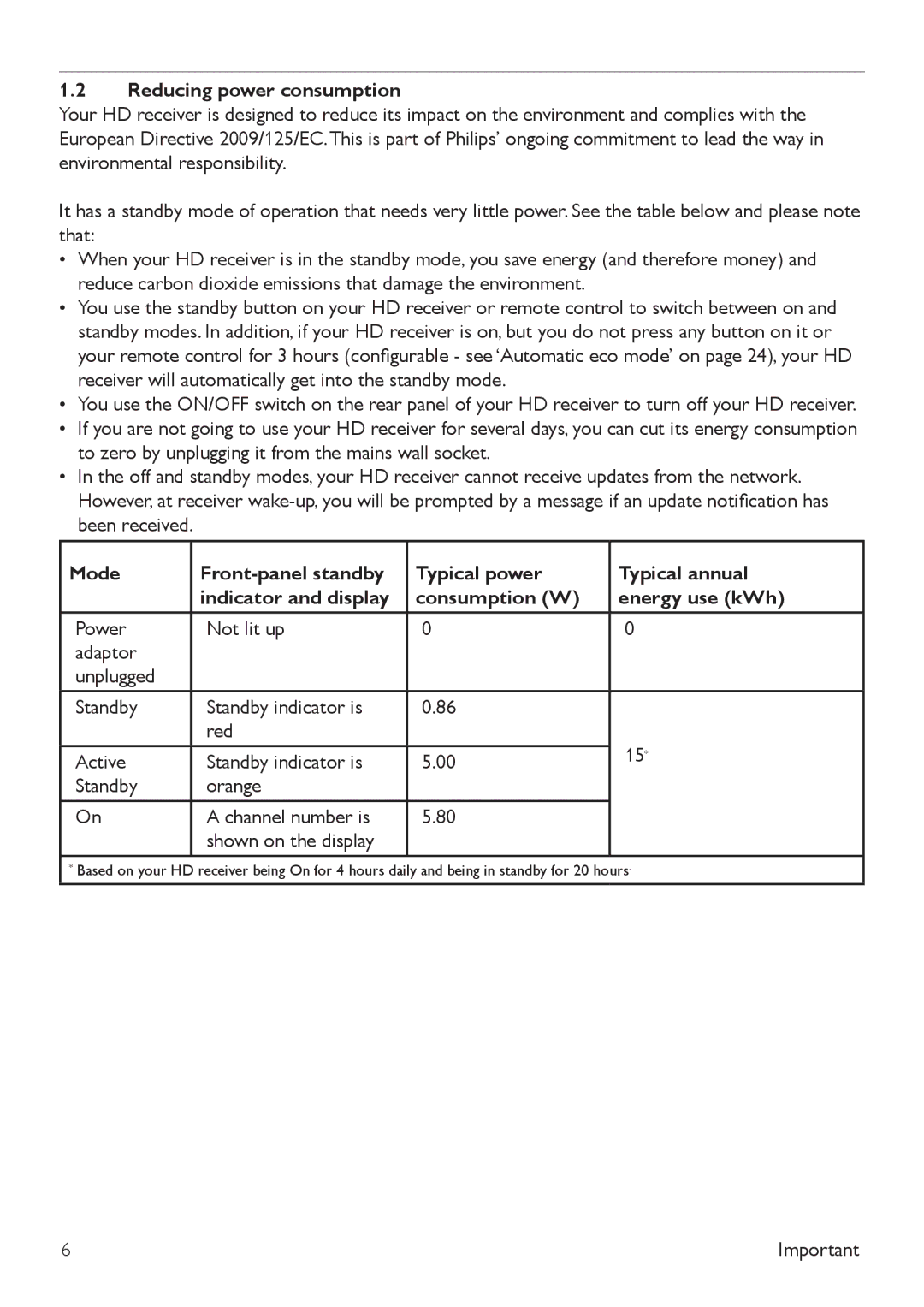
1.2Reducing power consumption
Your HD receiver is designed to reduce its impact on the environment and complies with the European Directive 2009/125/EC.This is part of Philips’ ongoing commitment to lead the way in environmental responsibility.
It has a standby mode of operation that needs very little power. See the table below and please note that:
•When your HD receiver is in the standby mode, you save energy (and therefore money) and reduce carbon dioxide emissions that damage the environment.
•You use the standby button on your HD receiver or remote control to switch between on and standby modes. In addition, if your HD receiver is on, but you do not press any button on it or your remote control for 3 hours (configurable - see ‘Automatic eco mode’ on page 24), your HD receiver will automatically get into the standby mode.
•You use the ON/OFF switch on the rear panel of your HD receiver to turn off your HD receiver.
•If you are not going to use your HD receiver for several days, you can cut its energy consumption to zero by unplugging it from the mains wall socket.
•In the off and standby modes, your HD receiver cannot receive updates from the network. However, at receiver
Mode | Typical power | Typical annual | |
| indicator and display | consumption (W) | energy use (kWh) |
Power | Not lit up | 0 | 0 |
adaptor |
|
|
|
unplugged |
|
|
|
Standby | Standby indicator is | 0.86 |
|
| red |
| 15* |
Active | Standby indicator is | 5.00 | |
Standby | orange |
|
|
On | A channel number is | 5.80 |
|
| shown on the display |
|
|
* Based on your HD receiver being On for 4 hours daily and being in standby for 20 hours.
6 | Important |
